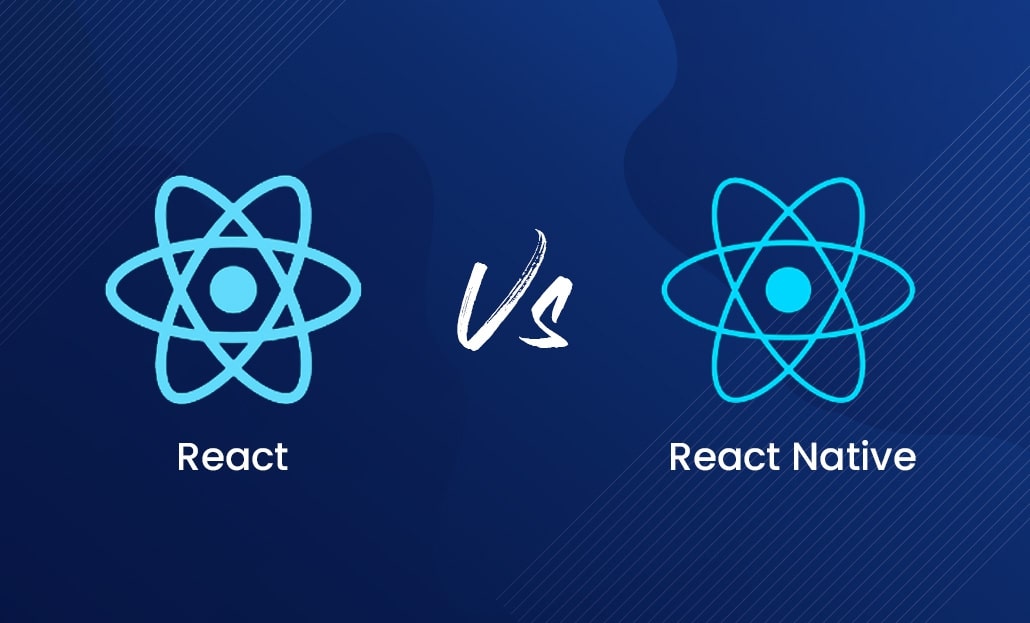If you're interested in building cross-platform mobile applications, you might have encountered two popular technologies: React and React Native. Everywhere you go, you will notice React Native and React JS in the development arena. So what’s all this hype about?
Is the hype worth it?
If yes, then which technology is suitable for you?
In this blog, we will share everything about React Native and ReactJS, their fundamental differences, advantages, and features so that you can make an informed choice that is best suited for your next project.
What is ReactJS?

As per BuiltWith, there are currently 11,908,579 websites built on ReactJS. Moreover, Statista's research shows that ReactJS is the world’s second-most-used JS library.
Backed by Facebook, it's a JavaScript library designed to build highly flexible and scalable websites and apps. It allows developers to create reusable UI components that can be used across different parts of a web application. As a result, ReactJS's developers can quickly build complex web applications and improve performance by rendering pages on the server side.
What is React Native?

React Native is a full-fledged framework for building mobile applications for iOS and Android platforms using JavaScript. Similar to ReactJS, React Native is the second most used mobile app framework. React Native developers build mobile applications that look and feel like native apps. The advantage is a single codebase. Popular apps built with React Native are Facebook, Instagram, Walmart, and Bloomberg.
What is the Difference Between ReactJS and React Native?
1. Syntax
ReactJS uses JSX, also called a JavaScript extension. One thing is that JSX does not distinguish between the markup and the app’s logic. This means markup will be written in JavaScript but will not appear after compilation.
2. Cost of development: React vs React Native
|
Project Size |
Duration |
Cost for React Native |
Cost for React JS |
|
Small Sized Project |
3-6 months |
$15,000 to $35,000 |
$30,000-$90,000 |
|
Medium Sized Project |
6- 9 months |
$35,000 to $80,000 |
$60,000-$180,000 |
|
Large Scale |
9 -12 months |
$80,000 to $300,000 |
$120,000-$360,000 |
3. Features
React JS offers a wide range of features for web development, including server-side rendering, component-based architecture, and the ability to work with a wide range of libraries and APIs. In addition, react Native provides features specific to mobile application development, such as platform-specific components, touch handling, and native modules.
Advantages and Disadvantages of React Native vs Reactjs.
Advantages of React Native
- Reusable Components save time: React Native UI components can be easily added to existing code without needing to rewrite.
- Very close to Native apps: Many claims that no one can match the native apps’ performance. But React Native proves these claims wrong. With near-native functionality, React Native apps functions like native apps. Examples are Facebook and Instagram.
- Accelerates development time by 40%: React Native helps reduce development time by 40%, thus enabling faster launch to market.
Advantages of ReactJS
- Impressive performance with Virtual DOM: Virtual DOM allows ReactJS developers to change the user interface without reloading the entire page. This way, developers can quickly build high-performance apps while saving time.
- Best SEO capacity: React JS has one of the best SEO capacities among all the other libraries. ReactJS renders pages on the server side (backend), making it easy for search engines to crawl the pages.
- No templates: Traditionally, websites were built on templates, But ReactJS works differently. ReactJS breaks down code into manageable and reusable UI components so developers can easily reuse components throughout the sites.
- Good support for testing: Libraries like Jest and Enzyme is compatible with ReactJS, making code testing a piece of cake.
Disadvantages of ReactJS
- Messy Data Hierarchy: Navigating through React.js code is difficult as developers first need to find parent code, then navigate to child code. Therefore, removing bugs and checking code standards is a hassle.
- Non-Vigilant Focus on User Interface: React Js is a UI-focused library. If your apps follow the view controller model, then only the view part is handled by React Js. The controller and model features must be developed with other tools and libraries. This is, again, not a straightforward task.
Disadvantages of React Native
- Dependency on third-party libraries: Despite the massive ecosystem, there are few native React Native libraries. As a result, for complex apps, you will need to use a large amount of third-party resources, which is time-consuming and expensive and can also put your data at risk.
- Costly native workarounds: There are two options if you build highly customized apps without your components in the library. One is to code the component in a native language like Java or Swift. Another is to write components in React Native from scratch.
- High loading time: It takes some time to initialize the runtime, even for advanced devices.
React Native or ReactJS: Which to Choose?
Depends. ReactJS is a JavaScript library. At the same time, React Native is a full-fledged framework for developing mobile and web apps.
If you want to build a high-performance web interface, then React JS is a good choice. Whereas, if you want to focus on mobile platforms, then React Native wins.
Contact Clarion Technologies to hire React Native developers and time-consuming React JS developers to help you build your apps. With a commitment to quality, we have a team of top 5% React and React Native talent that can help you gain an edge over the competition. Start today.









